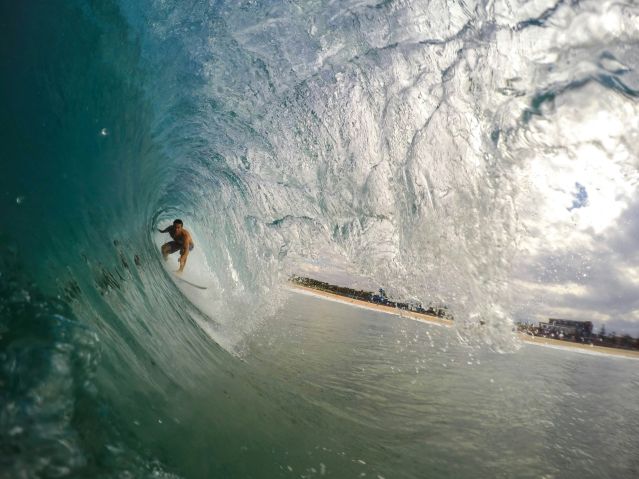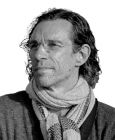Environment
Keeping Consciousness Unbroken
Today's psychology is profoundly shaped by a primal urge to integrate experience.
Posted August 8, 2024 Reviewed by Hara Estroff Marano
Key points
- The ability to integrate goes back a long way and has deep implications for current health and well-being.
- Life and capacity to know became ever more integrated over a particularly long evolutionary history.
- We flourish when all levels of our existence are integrated.

The ability to know is, undoubtedly, the highest possible expression of nature. And sometimes this ability is uniquely expressed in the beauty of culture. As is the case now in Paris, where the Olympic Games bring the world together to see what the human body is capable of in many possible variations of sports. Almost all the countries of the world send their best athletes in some discipline to compete fiercely with the best competitors in the world. Paris seeks to unite competitors in an event under the values of freedom, equality, and unity. The Olympic rings symbolize the unbreakable bond between all continents.
Life’s Need for Integration
This is where our theme of consciousness as knowing comes in. Consciousness is the capacity that supports the integration of our body as well as our mind. It is beginning to look more and more like the roots of consciousness go much deeper than we once thought. In The Sentient Cell, The Cellular Foundations of Consciousness, the authors show us convincingly how consciousness was present from the very beginning of life.
They state: “Life and consciousness are one and the same. All organisms have functioning cognitive systems.” (Reber, Baluska & Miller, 2023, 1)
The Centrality of Integration
Phenomenology began simultaneously with the beginning of the first cell. Many researchers allow consciousness to begin only with the emergence of nervous systems. Humans with trillions of cells, billions of which are nerve cells, evolved a much more complex order as mental state consciousness.
The point is that our phenomenology has very deep roots and forms an unbroken continuity with life. Our current human variation of consciousness has its origin in the deep need of life to create integration. And this is exactly what we are seeing now in its highest expressions at the Paris Olympics. From an early age, top athletes spend a great deal of time optimizing and maximally integrating the physical abilities that exist within them.
Integration appears in many theories as a core quality of consciousness. For example, in Giulio Tononi's Integrated Information Theory, it is one of the five basic phenomenological qualities of consciousness. Let us focus on this one quality for a moment. (Koch, 2024)
Christof Koch describes integration as:
“It reflects the unified, undivided nature of every experience.” (Koch, 2024, 97)
The process of integration goes back to the first challenge of the first cell: How to maintain autonomy while being in constant exchange with the environment?
In his New Theory of Being Human, Joseph LeDoux also emphasises the quality of integration:
“We thrive as individuals when our realms are integrated as one; we suffer when they are not.” (2023, 48)
The realms are the biological, neurobiological, cognitive, and conscious realms of our existence.
This need for integration began with the first cell that ever appeared. All the athletes in Paris today still face a variation of this possibility to integrate every aspect of their multicellular body and mind. If they succeed for a moment, perhaps a medal or a record will follow. Millions of people flow with the intense emotions associated with the success or failure of these complex integrations of the highest level.
The Deep Continuity between Living and Knowing
Nature and culture come together in world events to express themselves in this ancient endeavor to integrate the body and its existential phenomenology. We thrive as individuals when our cultural realm integrates as one. We suffer when our culture becomes polarized, as we see clearly in the extreme and radical violence occurring in our world. The ability to integrate goes back a long way and has deep implications for our present health and well-being.
How deep and how wide does life's capacity for integration reach? The answer is extremely deep and extremely wide. The cellular basis of consciousness is rooted in the deep bioelectric and sensory activities in biomembranes and their associated organelles and biomolecules based on the many currents of all ionic and other cellular charged particles. (Reber et al, 2024, 190) The existence of the bioelectric currents is rooted in the strong and weak nuclear forces that manifested at the origin of the cosmos.
But also in its breadth: the evolution of life is embedded in photosynthetic cycles that we can consider cosmic. And the fundamental forces of nature that underlie them also arose in the earliest beginnings of the universe, such as gravity and electromagnetism. The possibility of integration has deep roots.
Life and consciousness coexist. Life and its capacity to know have become more and more integrated over a particularly long evolutionary history. From the moment two cells fused to form our present bodies, the deep integration has been at work without interruption. We thrive when all levels of our existence are integrated. Culture is sometimes fully expressed as the values of freedom and equality in deep integration.
Whether we choose the path of higher integration or further polarization will determine the quality and success of the evolution of our human species, as well as our current mental health and well-being. At the heart of our humanity is the beauty of being able to integrate the world into an expression of connection between our bodies and our experiences.
Life and consciousness always develop together. The primal urge to integrate is always alive. Can we keep our consciousness unbroken?
References
Koch, C., (2024). Then I Am Myself The World. What Consciousness Is and How to Expand It. New York, Basic Books.
LeDoux, J. (2023). The Four Realms of Existence. A New Theory of Being Human. Cambridge Massachusetts: Belknap Press of Harvard University Press.
Reber, S. A., Baluska, F., Miller, W. B. (2024). The Sentient Cell. The Cellular Foundations of Consciousness. Oxford, Oxford University Press.




